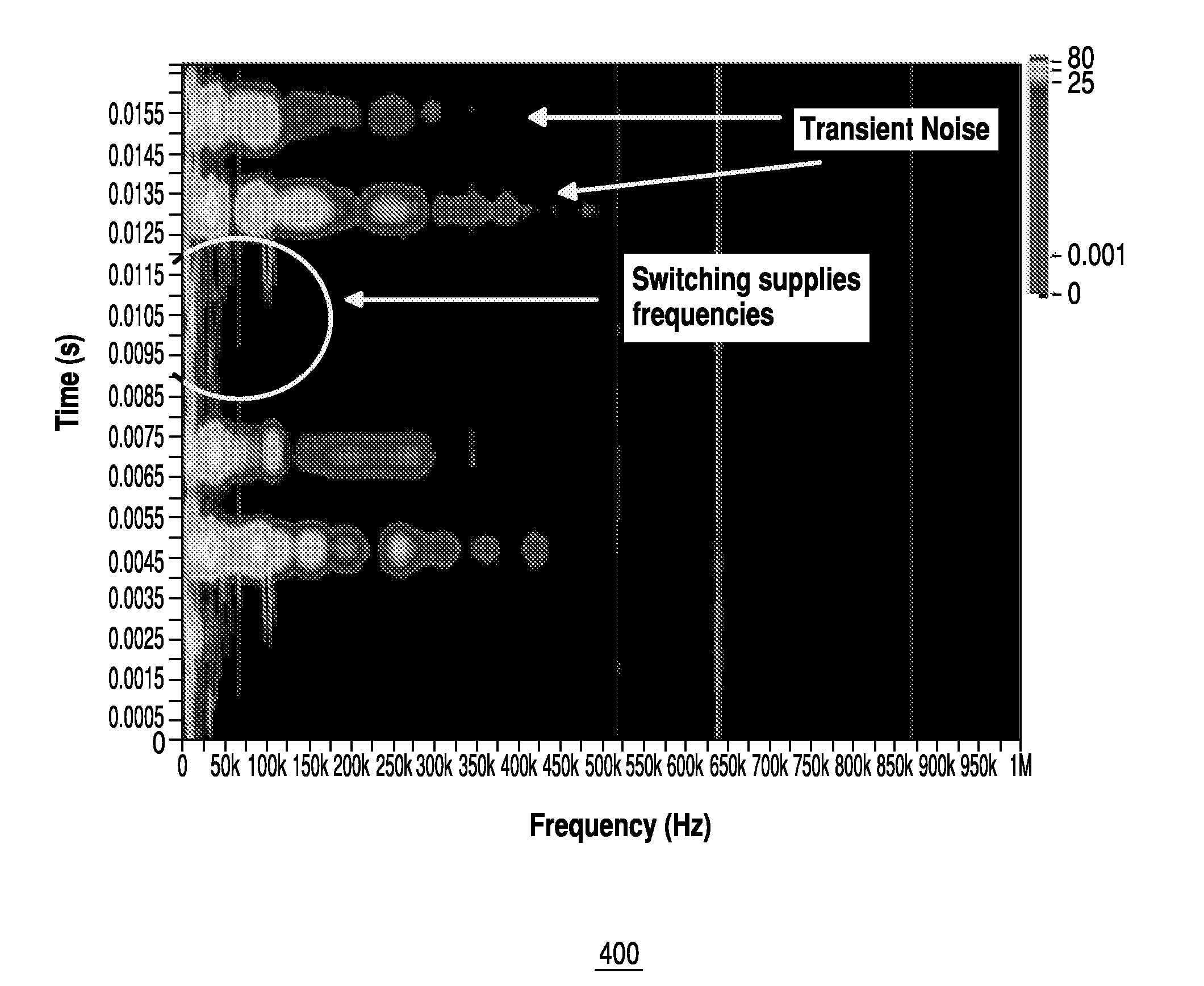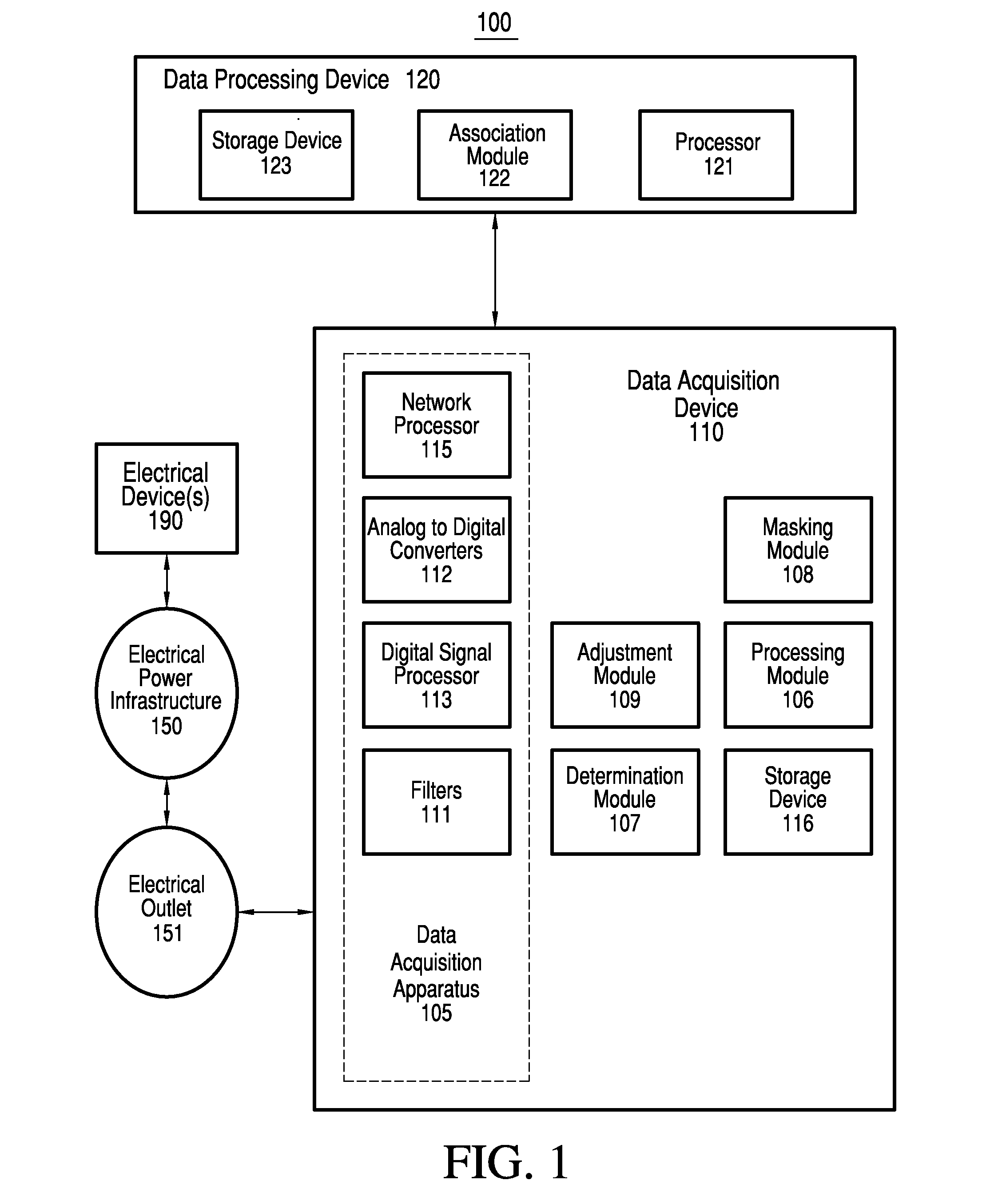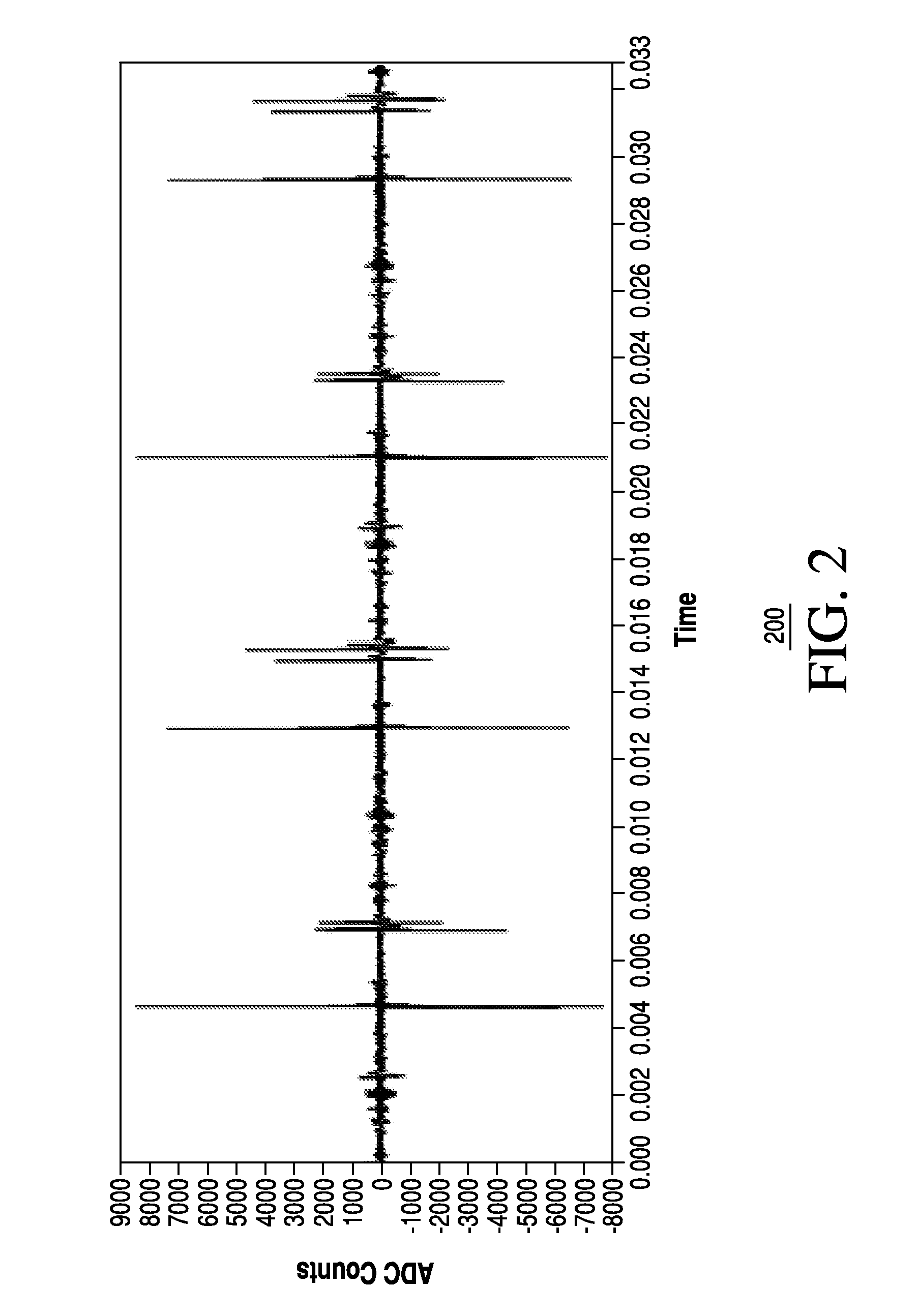Systems and methods to isolate lower amplitude signals for analysis in the presence of large amplitude transients
a technology of low-amplitude signals and analysis methods, applied in the field ofsignal processing systems and methods, can solve the problems of inability to use compandor in certain applications, higher cost of adcs with more bits of resolution,
- Summary
- Abstract
- Description
- Claims
- Application Information
AI Technical Summary
Benefits of technology
Problems solved by technology
Method used
Image
Examples
Embodiment Construction
OF EMBODIMENTS
[0026]Some embodiments concern a method of isolating low amplitude signals in one or more electrical signals. The method can include: using a data acquisition device to acquire one or more electrical signals, the one or more electrical signals comprise one or more transient signals and one or more first signals, and amplitudes of the one or more first signals are less than amplitudes of the one or more transient signals; using a first processor to compute one or more first parameters related to the one or more electrical signals, wherein: using the first processor to compute the one or more first parameters can include: determining a median amplitude of the one or more electrical signals; and determining a median slope of the one or more electrical signals; using the first processor to determine one or more first portions of the one or more electrical signal that comprise the one or more transient signals, wherein: determining the one or more first portions can include...
PUM
 Login to View More
Login to View More Abstract
Description
Claims
Application Information
 Login to View More
Login to View More - R&D
- Intellectual Property
- Life Sciences
- Materials
- Tech Scout
- Unparalleled Data Quality
- Higher Quality Content
- 60% Fewer Hallucinations
Browse by: Latest US Patents, China's latest patents, Technical Efficacy Thesaurus, Application Domain, Technology Topic, Popular Technical Reports.
© 2025 PatSnap. All rights reserved.Legal|Privacy policy|Modern Slavery Act Transparency Statement|Sitemap|About US| Contact US: help@patsnap.com



